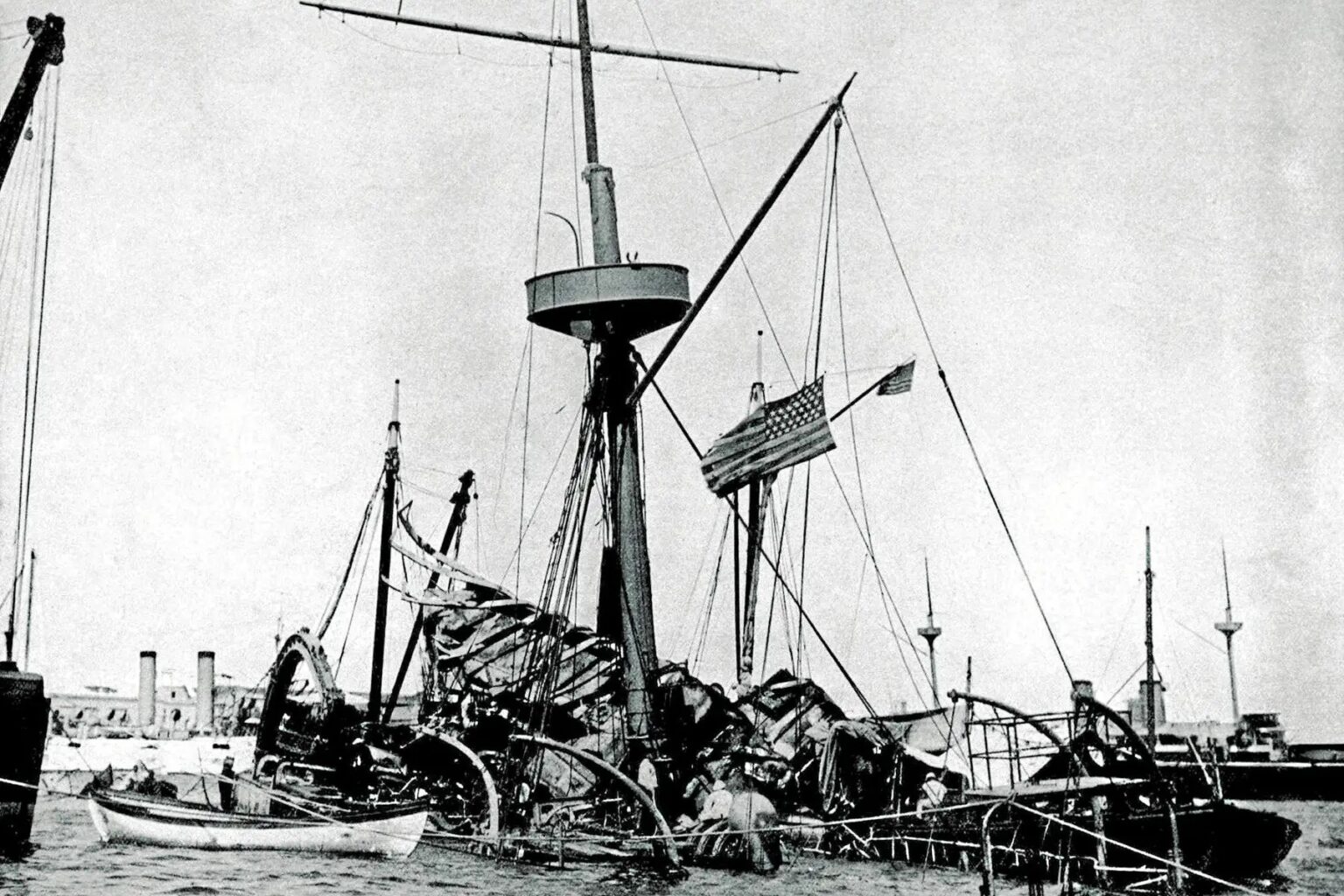Havana, Cuba: More than 260 dead sailors were left 124 years ago by the explosion of the battleship Maine, the perfect pretext for the United States to intervene in Cuba’s independence war against Spain.
With a large part of the high-ranking officers on land and after nine o’clock at night in the Havana capital, a detonation took half of the ship out of the water, which ended up sinking next to the buoy where it was anchored.
According to historical documents, the US Navy battleship arrived in Havana on January 25, 1898 with a crew of 354 men for a supposed routine visit.
Until today, her explosion leaves more questions than answers about a possible self-aggression, accident or premeditated act by Spain.
The American sensationalist press did not hesitate to accuse the Spanish of the sinking and newspapers such as the New York Journal and the New York World influenced public opinion according to this criterion.
The US Navy created a commission to investigate the events and after their investigations they prepared a report in which they observed that “only the explosion of a mine located under the ship” could have caused such destruction.
The report reached the United States Congress on March 29 and became the direct pretext for declaring war on Spain on April 25.
The Spanish side maintained that after the explosion no column of water or waves were seen, nor were there any dead fish in the surroundings, phenomena that would have been perceptible if there had been an underwater explosion.
Other theories deal with a possible accident caused by an explosion inside due to overheating of the coal.
Documents from the time show that this battleship manufactured in 1895, 100 meters long, 17 meters wide and weighing 6,700 tons carried a double load that required special security measures.
The ship was carrying coal to fuel the eight boilers that powered her twin propellers and some 60 tons of black powder used as ammunition for her weapons systems.
In 1911, the US government decided to remove the remains of the Maine from the bottom of Havana Bay, which were towed, dynamited and sunk on the high seas, thus the physical evidence disappeared.
Historians agree that the explosion was the American pretext to interfere in the independence war against Spain, which ended with a military intervention and the establishment of a Republic subject to the interests of the neighboring country.
In 1925, the Cuban government of Alfredo Zayas inaugurated the monument dedicated to the victims of the Maine in front of the capital’s Malecón in remembrance of the 266 sailors who lost their lives in the explosion.
At the top of the structure, a bald eagle stood with outstretched wings as a symbol of the United States’ presence on the island.
And there it would remain until January 18, 1961, the Monuments Board created by the Cuban revolutionary government, agreed to modify the monument and as a consequence of this the eagle was suppressed, and other changes were made such as the placement of a plaque with the following inscription: “To the victims of El Maine who were sacrificed by the imperialist voracity in their eagerness to seize the island of Cuba.”

